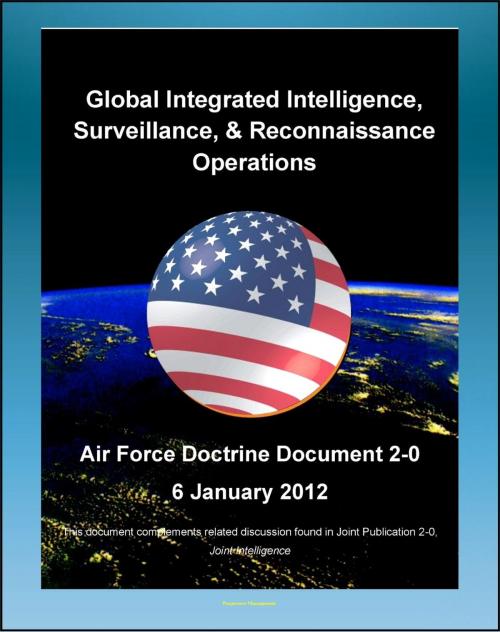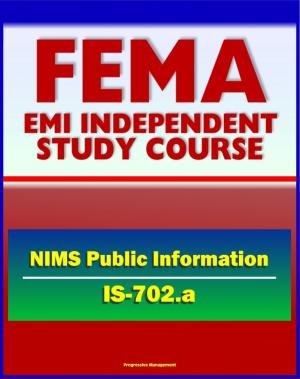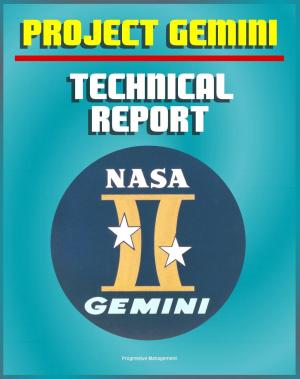Air Force Doctrine Document 2-0, Global Integrated Intelligence, Surveillance & Reconnaissance (ISR) Operations - Satellites, Geospatial, Imagery, Signals, Communications, Electronic, Human Intel
Nonfiction, History, Military, Aviation, Social & Cultural Studies, Political Science, Government| Author: | Progressive Management | ISBN: | 9781476163635 |
| Publisher: | Progressive Management | Publication: | April 10, 2012 |
| Imprint: | Smashwords Edition | Language: | English |
| Author: | Progressive Management |
| ISBN: | 9781476163635 |
| Publisher: | Progressive Management |
| Publication: | April 10, 2012 |
| Imprint: | Smashwords Edition |
| Language: | English |
Covering geospatial, imagery, satellite systems, UAVs, signals, communications, electronic, and human intelligence, this publication is the Air Force's keystone doctrinal publication on global integrated ISR and defines how the Service plans and conducts these operations to enable Joint Operations. It compiles the best practices of how an Airman conducts and employs ISR capabilities and why global integrated ISR is unique. The three chapters define global integrated ISR, the command relationships and authorities that enable it, and how these operations are planned and conducted.
Chapter One, Fundamentals of Global Integrated ISR Operations, describes global integrated ISR, answering "What is global integrated ISR?" and how it is implemented to support the Air Force and its missions. It focuses on: the definition of global integrated ISR; the Airman's perspective; global integrated ISR as a service core function (SCF); basic global integrated ISR principles; and policy and guidance for global integrated ISR operations. It also outlines how cross-domain integration and global integrated ISR are linked. Finally, it introduces the Air Force process of planning and direction, collection, processing and exploitation, analysis and production, and dissemination (PCPAD).
Chapter Two, Command and Organization of Global Integrated ISR Forces, discusses the command and organization of Air Force global integrated ISR forces. It discusses the roles of commanders in regards to the planning and execution of global integrated ISR operations. It outlines the roles and responsibilities of global integrated ISR linked personnel within and outside of the ISR Division of the Air Operations Center (AOC). It discusses global integrated ISR presentation of forces considerations and guidance to include remote and distributed operations. It provides an overview of the roles of global integrated ISR associated personnel within different Air Force echelons and mission sets. It details the special relationships required for specific missions and the roles in homeland and counterdrug operations, and irregular warfare considerations.
Chapter Three, The Global Integrated ISR Process, answers the question, "How does the Air Force perform global integrated ISR operations?" This section defines the various intelligence disciplines and their subsets. It discusses the different types of guidance to be considered when planning global integrated ISR operations. It outlines the multiple types of ISR resources that are available for employment. It outlines the Air Force global integrated ISR process of PCPAD. Finally, it describes the different methodologies that PCPAD supports and the types of global integrated ISR products created.
Contents: Chapter One - Fundamentals Of Global Integrated Intelligence, Surveillance, And Reconnaissance Operations * Chapter Two - Command And Organization Of Global Integrated ISR Forces * Chapter Three - The Global Integrated ISR Process
Covering geospatial, imagery, satellite systems, UAVs, signals, communications, electronic, and human intelligence, this publication is the Air Force's keystone doctrinal publication on global integrated ISR and defines how the Service plans and conducts these operations to enable Joint Operations. It compiles the best practices of how an Airman conducts and employs ISR capabilities and why global integrated ISR is unique. The three chapters define global integrated ISR, the command relationships and authorities that enable it, and how these operations are planned and conducted.
Chapter One, Fundamentals of Global Integrated ISR Operations, describes global integrated ISR, answering "What is global integrated ISR?" and how it is implemented to support the Air Force and its missions. It focuses on: the definition of global integrated ISR; the Airman's perspective; global integrated ISR as a service core function (SCF); basic global integrated ISR principles; and policy and guidance for global integrated ISR operations. It also outlines how cross-domain integration and global integrated ISR are linked. Finally, it introduces the Air Force process of planning and direction, collection, processing and exploitation, analysis and production, and dissemination (PCPAD).
Chapter Two, Command and Organization of Global Integrated ISR Forces, discusses the command and organization of Air Force global integrated ISR forces. It discusses the roles of commanders in regards to the planning and execution of global integrated ISR operations. It outlines the roles and responsibilities of global integrated ISR linked personnel within and outside of the ISR Division of the Air Operations Center (AOC). It discusses global integrated ISR presentation of forces considerations and guidance to include remote and distributed operations. It provides an overview of the roles of global integrated ISR associated personnel within different Air Force echelons and mission sets. It details the special relationships required for specific missions and the roles in homeland and counterdrug operations, and irregular warfare considerations.
Chapter Three, The Global Integrated ISR Process, answers the question, "How does the Air Force perform global integrated ISR operations?" This section defines the various intelligence disciplines and their subsets. It discusses the different types of guidance to be considered when planning global integrated ISR operations. It outlines the multiple types of ISR resources that are available for employment. It outlines the Air Force global integrated ISR process of PCPAD. Finally, it describes the different methodologies that PCPAD supports and the types of global integrated ISR products created.
Contents: Chapter One - Fundamentals Of Global Integrated Intelligence, Surveillance, And Reconnaissance Operations * Chapter Two - Command And Organization Of Global Integrated ISR Forces * Chapter Three - The Global Integrated ISR Process















